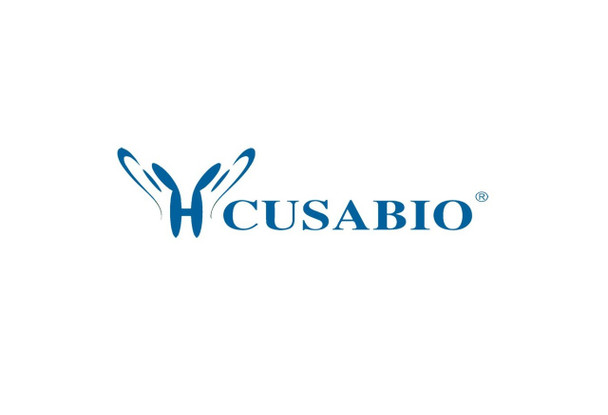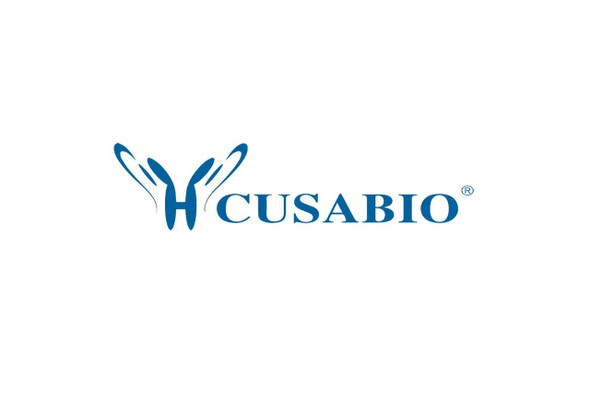Cusabio Human Recombinants
Recombinant Human Interleukin-28 receptor subunit alpha (IFNLR1), partial | CSB-EP816871HU1
- SKU:
- CSB-EP816871HU1
- Availability:
- 13 - 23 Working Days
Description
Recombinant Human Interleukin-28 receptor subunit alpha (IFNLR1), partial | CSB-EP816871HU1 | Cusabio
Alternative Name(s): Cytokine receptor class-II member 12 Cytokine receptor family 2 member 12
Gene Names: IFNLR1
Research Areas: Immunology
Organism: Homo sapiens (Human)
AA Sequence: RPRLAPPQNVTLLSQNFSVYLTWLPGLGNPQDVTYFVAYQSSPTRRRWREVEECAGTKELLCSMMCLKKQDLYNKFKGRVRTVSPSSKSPWVESEYLDYLFEVEPAPPVLVLTQTEEILSANATYQLPPCMPPLDLKYEVAFWKEGAGNKTLFPVTPHGQPVQITLQPAASEHHCLSARTIYTFSVPKYSKFSKPTCFLLEVPEANWA
Source: E.coli
Tag Info: Tag-Free
Expression Region: 21-228aa
Sequence Info: Extracellular Domain
MW: 23.6 kDa
Purity: Greater than 85% as determined by SDS-PAGE.
Relevance: The IFNLR1/IL10RB dimer is a receptor for the cytokine ligands IFNL2 and IFNL3 and mediates their antiviral activity. The ligand/receptor complex stimulate the activation of the JAK/STAT signaling pathway leading to the expression of IFN-stimulated genes (ISG), which contribute to the antiviral state. Determines the cell type specificity of the lambda interferon action. Shows a more restricted pattern of expression in the epithelial tissues thereby limiting responses to lambda interferons primarily to epithelial cells of the respiratory, gastrointestinal, and reproductive tracts. Seems not to be essential for early virus-activated host defense in vaginal infection, but plays an important role in Toll-like receptor (TLR)-induced antiviral defense. Plays a significant role in the antiviral immune defense in the intestinal epithelium.
Reference: "IFN-lambdas mediate antiviral protection through a distinct class II cytokine receptor complex." Kotenko S.V., Gallagher G., Baurin V.V., Lewis-Antes A., Shen M., Shah N.K., Langer J.A., Sheikh F., Dickensheets H., Donnelly R.P. Nat. Immunol. 4:69-77(2003)
Storage: The shelf life is related to many factors, storage state, buffer ingredients, storage temperature and the stability of the protein itself. Generally, the shelf life of liquid form is 6 months at -20?/-80?. The shelf life of lyophilized form is 12 months at -20?/-80?.
Notes: Repeated freezing and thawing is not recommended. Store working aliquots at 4? for up to one week.
Function: The IFNLR1/IL10RB dimer is a receptor for the cytokine ligands IFNL2 and IFNL3 and mediates their antiviral activity. The ligand/receptor complex stimulate the activation of the JAK/STAT signaling pathway leading to the expression of IFN-stimulated genes (ISG), which contribute to the antiviral state. Determines the cell type specificity of the lambda interferon action. Shows a more restricted pattern of expression in the epithelial tissues thereby limiting responses to lambda interferons primarily to epithelial cells of the respiratory, gastrointestinal, and reproductive tracts. Seems not to be essential for early virus-activated host defense in vaginal infection, but plays an important role in Toll-like receptor (TLR)-induced antiviral defense. Plays a significant role in the antiviral immune defense in the intestinal epithelium.
Involvement in disease:
Subcellular Location: Membrane, Single-pass type I membrane protein
Protein Families: Type II cytokine receptor family
Tissue Specificity: Widely expressed.
Paythway: Jak-STATsignalingpathway
Form: Liquid or Lyophilized powder
Buffer: If the delivery form is liquid, the default storage buffer is Tris/PBS-based buffer, 5%-50% glycerol. If the delivery form is lyophilized powder, the buffer before lyophilization is Tris/PBS-based buffer, 6% Trehalose, pH 8.0.
Reconstitution: We recommend that this vial be briefly centrifuged prior to opening to bring the contents to the bottom. Please reconstitute protein in deionized sterile water to a concentration of 0.1-1.0 mg/mL.We recommend to add 5-50% of glycerol (final concentration) and aliquot for long-term storage at -20?/-80?. Our default final concentration of glycerol is 50%. Customers could use it as reference.
Uniprot ID: Q8IU57
HGNC Database Link: HGNC
UniGene Database Link: UniGene
KEGG Database Link: KEGG
STRING Database Link: STRING
OMIM Database Link: OMIM









